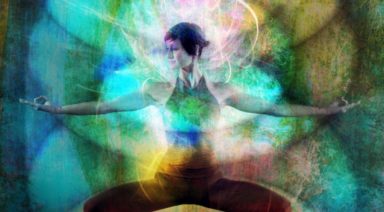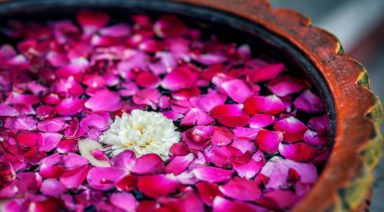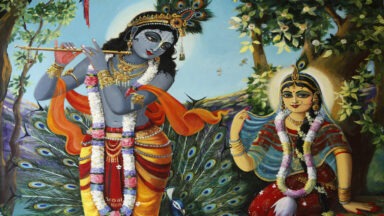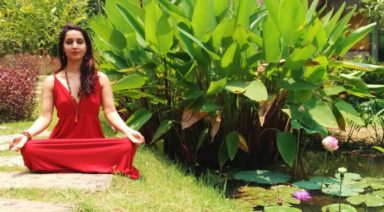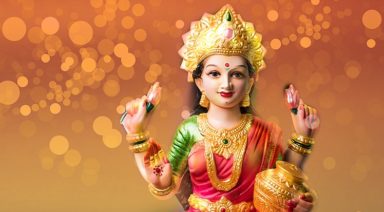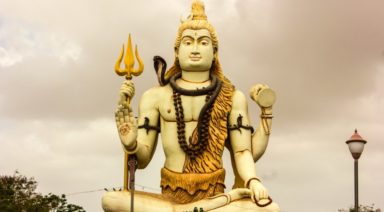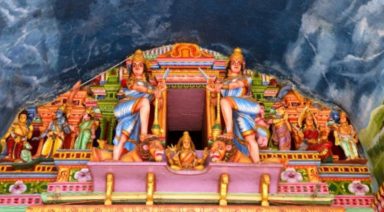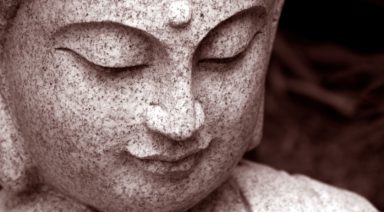Yoga For Your Doshas: Kapha
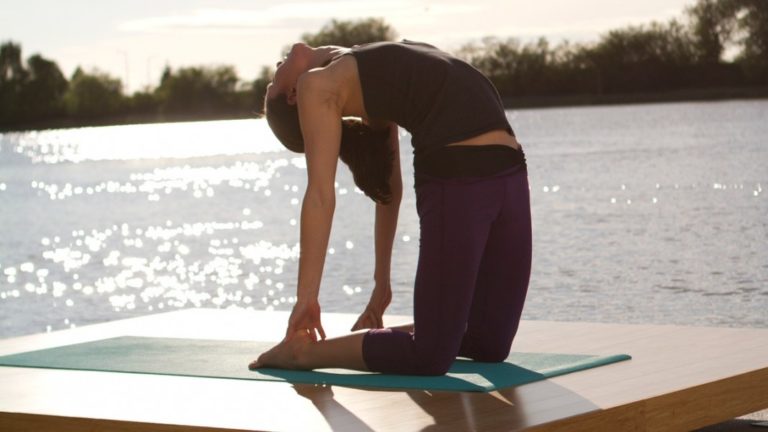
In this last part of our three part Dosha series we will visit Kapha Dosha. At home and on the couch–that’s where we’ll likely find this type. They enjoy laying low, chilling out, being quite happy and comfortable in familiar homely surroundings with their cat, dog and family around. Perhaps you’ll find them enjoying a good book or movie while munching on some healthy, or not so healthy, snacks.
As per Ayurveda, yoga’s five thousand year old sister science which divides us humans into three main types (namely Vata, Pitta and Kapha), the Kapha Dosha is the calmest and most loyal type; loving and steady.
Kapha, being associated with the natural elements water and earth (Vata is associated with space and air, Pitta with fire and water), is easy to like but also faces her, or his, own challenges in physical and emotional well-being. Kapha, most often being an endomorph body type, is the most likely of the three Doshas to face problems around weight management.
If you are a Kapha person you may have many friends who know they can always count on you. You most likely give your Vata and Pitta friends a sense of stability and a feeling of security that they may be longing for, and might lack within themselves. Community is important to you and you might sport a green thumb in gardening―tending to nature’s beautiful creations.
Kapha is very sensitive to cold and damp climates. If you live in an area with long and rainy cold seasons you may get downright miserable and crave warmth and dryness. For you, it is important to stay warm during the cold season. So make sure you keep moving to prevent stagnation in your body, and nourish yourself with spicy teas like Chai Tea or Hot Ginger Tea. You may also enjoy Golden Milk, a warm Turmeric drink.
Food for Kapha
Sorry Kapha, but even though you are probably really fond of your sweet, sour and salty flavors, these are also the ones you should stay away from. Foods that are sweet, sour, and salty in taste will increase the problematic qualities that come with a predominant Kapha Dosha or a Kapha imbalance.
This type does really well with foods that are bitter, pungent and astringent in nature, such as leafy greens, kale, spinach and collard greens, hot spices and curries, apples and berries. Kapha also wants to take it easy on oils and dietary fat, and heavy food items such as most dairy, baked and glutinous foods, cakes and ice creams.
Kapha will do well with a light and easy to digest diet consisting of small amounts of low glycemic fruit, steamed vegetables, and warm soups and stews. These are all foods that won’t weigh you down.
Meditation for Kapha
Nothing suits Kapha more then to sit in one spot for periods of time and not move. This Dosha type tends to be extremely loving, loyal and particularly devotional nature and will find bliss in joining in a spiritual practice. Finding ways to focus the mind won’t be necessary for you if you are a Kapha person; you are already calm and grounded.
A wonderful meditation technique for Kapha is a walking mindfulness meditation. Put on whatever you need to stay warm and comfortable and go for a short walk, preferably in nature, in an area you know well where you feel safe and don’t get distracted by traffic or other concerns. Let your senses―smell, sight, touch, sound and even taste―be engaged and notice your environment without getting too attached to these sensory impressions.
You may also use your walking meditation to align your breath with your step. For Kapha, mantra meditation is very useful as it keeps your mind engaged enough to not drift off into a sleepy state. Kapha should sit in an upright position with an erect spine while meditating to avoid slouching and nodding off.
Exercise for Kapha
Kapha Dosha, more so then the other two, has excellent endurance and stamina. With steady energy the Kapha person can go on, at a low intensity, for a very long time. Kapha is also the Dosha least likely to want to exercise at all. For you, dear Kapha, it is important to find an activity you enjoy so you don’t have to come up with excuses not to move at all.
You are likely to enjoy team sports or group training sessions, as they allow you to be with others and build community which you naturally thrive on. Interestingly, out of all three Doshas, Kapha is the one least likely to suffer from the ill effects running can have your joints. Though the benefits of running as a recreational activity are somewhat controversial, Kapha (with its well buffered and lubricated joints) can easily get away with it as a cardiovascular activity.
Most important for Kapha Dosha is to get moving, no matter what the activity. Try High-Intensity Interval Training (HIIT), cardiovascular training, fast-paced resistance training with more repetitions and any sport that gets the blood pumping and induces sweat.
Yoga for Kapha
Similar to other forms of exercise, the Kapha person can get away with more vigorous forms of yoga. Even though Kapha is a type that tends to be of a sturdier build, this type also benefits from great flexibility. A Vinyasa flow is a fine practice for Kapha, as are Hot Yoga and Ashtanga Yoga. The Kapha body doesn’t sweat easily, so a warm room and flowing practice will help work up a healthy sheen and flush toxins out through the skin. Poses that are particularly beneficial for Kapha are standing postures and those that stimulate the adrenal system; in particular, asanas such as Natarajasana (Lord of the Dance Pose) or Ustrasana (Camel Pose). Kapalabhati Pranayama, the skull shining breath, or the Kundalini Breath Of Fire are also beneficial for stimulating blood circulation and the respiratory system, which is especially important for Kapha who tends to accumulate mucous easily.
Each of the Doshas have their own unique strengths and challenges, and with a little awareness you can do a great deal to stay healthy and balanced. You can use this series to adjust your lifestyle and routines in a way that supports your constitution.
I suggest you take one of the many Dosha Quizzes available online that will help you figure out which type you are. If you are dealing with a particular concern, you may also seek the advice of an Ayurvedic practitioner.
Small changes can have a big impact on your quality of life. Don’t be afraid, find out who you are and take small steps. You might enjoy it.
Ayurvedic Cleansing Tips for Radiant Health
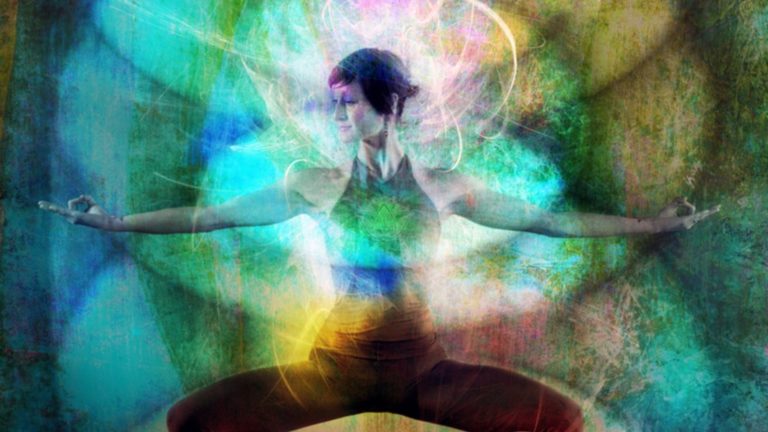
Cleansing twice a year during the seasonal changes of Spring and Fall is highly recommended in helping you to reduce the presence of toxic buildup in your body and mind while allowing you to build a stronger power of digestion and immunity. In Ayurveda the term for the toxins that build up in the system is Ama, while the power of digestion is called Agni. Below are some tips on how to build your Agni and reduce your Ama so that you can enjoy radiant health and wellness all year long.
What is Agni?
Agni is the Sanskrit word for the digestive fire that stimulates the breakdown of nutrients that we take into our bodies and it is considered the cornerstone of good health. In general when we speak about Agni we are speaking of the digestive capabilities of the body and specifically the Agni that is situated in the lower stomach and small intestines (Jathara Agni), but actually there are 13 different Agni’s that govern all metabolic functions and it can be said that all processes involving heat, light, transformation and conversion relate to Agni.
So a strong and healthy Agni allows for the absorption, assimilation, metabolism, and digestion of nutrients from food but also allows for proper sense perception, cellular metabolism and mental assimilation. In short a healthy Agni affects both body and mind, which means that when we are cleansing we would be wise to become conscious of all that we take in to our bodies and minds through both our diet and our environment.



